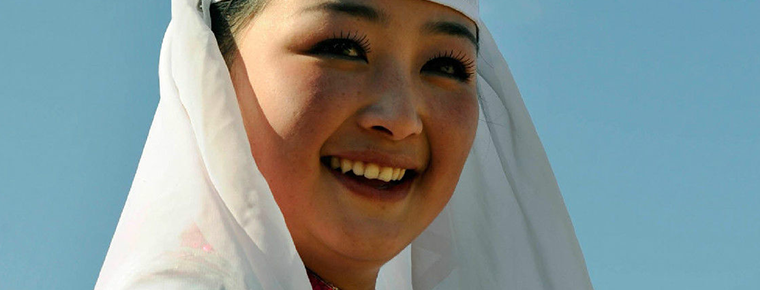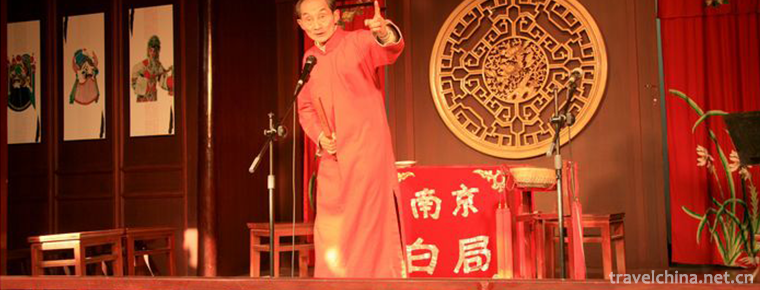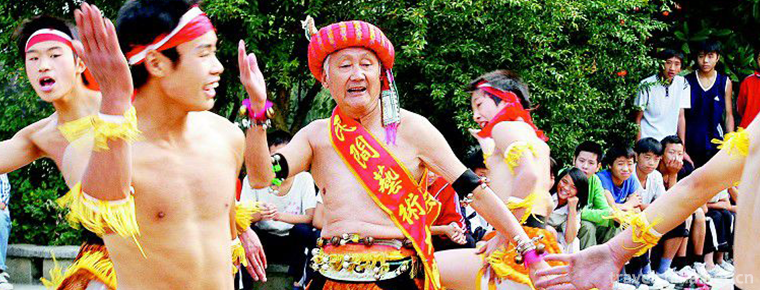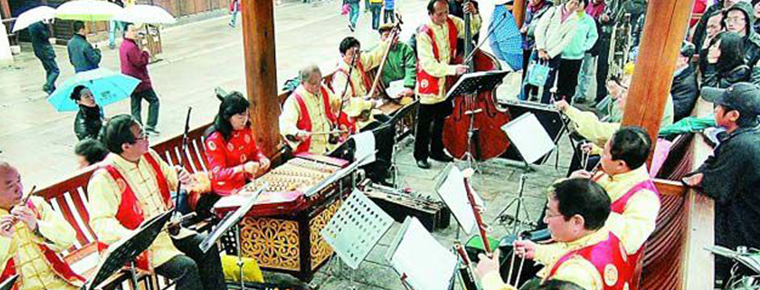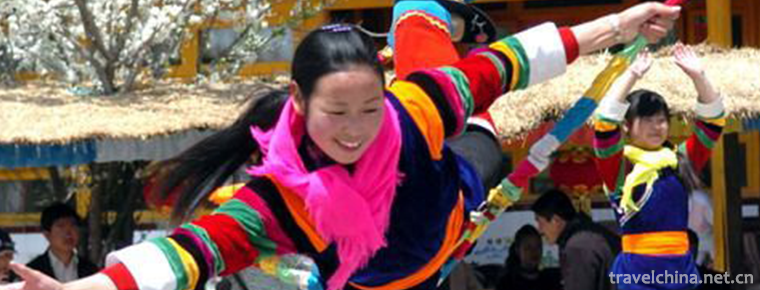Traditional Brewing Techniques of Brewing Wine
Traditional Brewing Techniques of Brewing Wine
The traditional brewing technology of Jinhua liquor is the traditional handicraft technology of Jinhua City, Zhejiang Province. The typical representative and complete remains of rice wine brewing techniques in early ancient times have unique status and cultural value in the history of rice wine development. In practice, Jinhua liquor explored the optimum techniques for the combination of Baiqu and Hongqu, so that Shousheng liquor brewed with both the fresh and fragrant flavor of Baiqu liquor and the color and taste of Hongqu liquor was selected by the government as the "standard method" for the production of Huangqu liquor in the Yuan Dynasty. During the Ming and Qing Dynasties, Jinhua liquor formed different series and brands including Shousheng liquor, Sanghua liquor, Baizi liquor, Sangluo liquor, Dingcheng liquor, Huaqu liquor, Gansheng liquor and so on.
brief introduction
In 2008, it was selected as the second batch of national intangible cultural heritage list approved by the Ministry of Culture by the State Council.
Declaration: Jinhua City, Zhejiang Province
Publication: 928_-145
Jinhua Wine is the general name of high-quality rice wine brewed in Jinhua City. It is brewed with high-quality glutinous rice produced in Jinhua as raw material and with the unique technique of Double-curvature fermentation. In Tang Dynasty, officials set up brewing bureaus here. The wine in official wine shops was specially for official drinking. The name of "Jinhua Mansion Wine" began here. In the Yuan Dynasty, the government even defined the Jinhua liquor koji recipe and brewing recipe as the "standard method" and promoted them, which greatly improved the brewing technology of Chinese rice wine. Since then, the development of rice wine in various places has been faster, and the Jinhua liquor industry has been more prosperous.
The brewing technology of Jinhua liquor has gone through three stages of development. The "white mash wine" appeared in the Spring and Autumn Period and Warring States Period improved the brewing technology of early yellow rice wine by using glutinous rice as raw material, Polygonum Polygonum as saccharifying starter, and pioneered the techniques of sprinkling, precipitation and filtration, which improved the liquor juice and prolonged the storage period. During the Tang and Song Dynasties, the Baiqu brewing techniques of Jinhua liquor became more and more perfect. Among them, "Jianxi Spring" and "Mistaken Water" became famous Baiqu liquor because of their pure color and mellow taste. The Origin of Traditional Brewing Techniques of Jinhua Liquor
Jinhuafu liquor is a famous traditional liquor in China. It came into being as early as the end of Spring and Autumn. It is a kind of semi-dry yellow rice wine made from white glutinous rice as raw material, red koji and wheat koji as saccharifying starter and using "feeding method" to separate cylinders. Its color is golden and bright, its flavor is mellow and tasty. It has both the color and taste of red koji wine and the fresh alcohol of wheat koji wine. Its reputation is no less than that of Shaoxing rice wine, and it is also listed as the essence of Chinese wine culture. As early as 1915, he won the Gold Prize at Panama World Commodity Fair. Sample wine was taken from Cao Hengju Winery, Cao Zhai Town, Jindong District. In 1963, he was awarded the National Quality Wine at the 2nd National Wine Appraisal Conference and won the Silver Prize. Then he won the gold medal at the first food exposition in Beijing in 1988.
origin
edit
Jinhua Yellow Wine, also known as rice wine, is a national specialty of China. It belongs to brewing wine and plays an important role in the world's three major brewing wines (yellow wine, wine and beer). Wine-making technology is unique and has become a typical representative and model of Oriental brewing industry. Among them, wheat starter rice wine represented by Zhejiang Shaoxing rice wine is the longest and most representative product of rice wine; Shandong Jimo old wine is the typical representative of northern millet rice wine. Yellow rice wine is one of the oldest wines in the world. It originated in China, and only in China. It is also called the world's three oldest wines with beer and wine. Yellow rice wine is the oldest beverage wine in China. It has been brewed for more than 4000 years. Because of the original yellow liquor, clear yellow or amber color, clear and transparent, it is called yellow wine. Through the hard work of the people for generations, the brewing technology has been continuously improved, so that the yellow wine in China has reached a higher level in the world. Deeply loved by domestic and foreign people. In the Shang and Zhou Dynasties, the Chinese invented the multiple fermentation method of liquor koji and began to produce large quantities of yellow rice wine. Yellow rice wine has a wide range of origins and varieties, including Zhejiang Huadiao wine, Zhuangyuan red, Shanghai old wine, Shaoxing rice wine, Fujian old wine, Jiangxi Jiujiang jar-sealing wine, Jiangsu Suanyang jar-sealing wine, Wuxi Huiquan wine, Guangdong pearl red wine, Shandong Jimo old wine and so on. However, it is recognized by the Chinese brewing industry as the most popular and characteristic in the international and domestic markets. Rice and millet are used as raw materials for rice wine. The alcohol content of rice wine is 14%-20%, which belongs to low-alcohol brewing. Yellow rice wine is rich in nutrients and contains 21 kinds of amino acids, including some unknown amino acids. The human body can not synthesize it by itself. It must rely on food to absorb 8 kinds of essential ammonia. Yellow rice wine is known as "liquid cake".

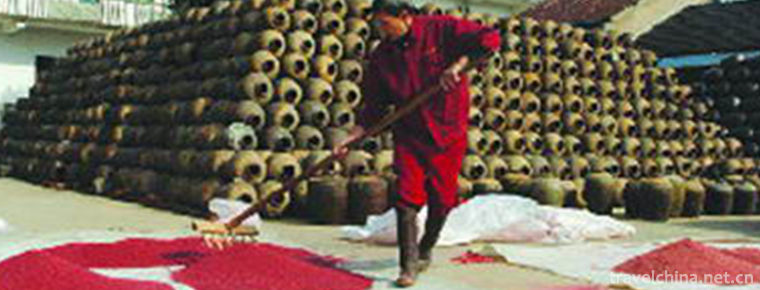
-
Lijiang Heilongtan Scenic Area
Heilongtan (also known as Yuquan Park) was built in the second year of Qianlong (1737). It was restored in the sixty years of Qianlong and the eighteenth year of Guangxu. The old Yuquan Dragon King .
Views: 257 Time 2018-12-22 -
Hui Costume
The main symbol of Hui costume is the head. Men like to wear white caps. Hui women often wear a hood. Older Hui women wear black or brown headscarves in winter .
Views: 113 Time 2019-05-04 -
Jieshou Book Club
The first book of the world will be a national list of intangible cultural heritage. Miaohu Book Club in Jieshou City is a unique bonsai project in its culture and art..
Views: 111 Time 2019-05-06 -
Nanjing White Bureau
Nanjing Baiju is an ancient type of music in Nanjing area. The "Nanjing tune" in the Yuanqu brand is the original tune of Baiju's ancient tune. It has a history of more than 700 years. It wa.
Views: 108 Time 2019-06-07 -
Meat rustles
"Meat Lianliang" refers to the native minority local dance variety in Lichuan City, Hubei Province, which takes the unique body performance as the main form. It is popular in the city's Duti.
Views: 229 Time 2019-06-11 -
Ten times of music
Shifan music is a traditional instrumental music spread by Hakkas in Fuzhou and Western Fujian Province. It has been circulated since the middle of Daoguang in the Qing Dynasty. The origin of Shifan m.
Views: 308 Time 2019-06-15 -
Turkish Wheel Autumn
There is a beautiful and magical legend about the origin of Tu's wheel autumn. Legend has it that in order to find a way out of life, the ancestors of the Tu nationality ploughed their fields successi.
Views: 210 Time 2019-06-23 -
Cao Zhi
Cao Zhi (192 - 232 December 27th), Zi Jian, Pei Guo Qiao County (now) Anhui province Bozhou City, born in East Wuyang (now Shenxian, Shandong, Juancheng). Cao Cao He was born with third sons from Quee.
Views: 98 Time 2019-09-07 -
The changing style of Cheongsam
After a hundred years of evolution, with the change of people's life style and aesthetic taste, cheongsam has developed a variety of styles, which makes people dazzled. In the golden age of the development of Cheongsam in the 1930s and 1940s, the styles of cheongsam changed .
Views: 310 Time 2020-12-11 -
Mineral resources in Yibin
There are 44 kinds of mineral resources discovered and evaluated in Yibin, 305 mineral areas. Among the 23 kinds of proved reserves with E-class reserves, there are 6 kinds of large-scale mining value .
Views: 135 Time 2020-12-18 -
Yibin economy
In 2019, Yibin City will realize a GDP of 260.189 billion yuan, an increase of 8.8% over the previous year in terms of comparable prices. Among them, the added value of the primary industry was 27.764 billion yuan, an increase of 2.9%; the add.
Views: 282 Time 2020-12-18 -
Guangan location
Guang'an City is located in the east of Sichuan Province, with the geographical coordinates of 30 ° 01 ′ - 30 ° 52 ′ n, 105 ° 56 ′ - 107 ° 19 ′ e, 134.5 km from east to west, 93.6 km from north to south, from Linshui county to Dazhu County of Dazhou City, from.
Views: 359 Time 2020-12-19

